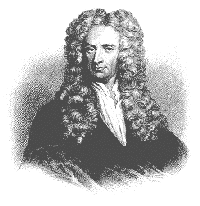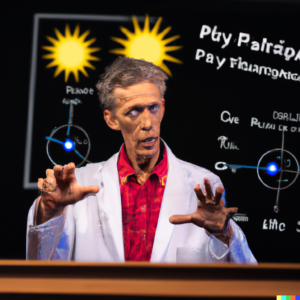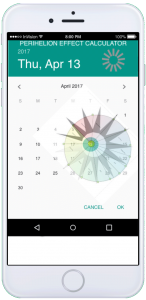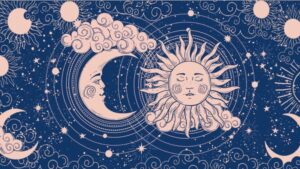 Sir Isaac Newton (1643). He was born very prematurely, and it was said that he could fit into a quart pot. His father had died three months before Newton was born, and the plan was for the boy to take over the running of the family farm when he grew up. He wasn’t a good farmer, and his uncle suggested that he be sent to the university instead. He went to Cambridge, and when it was shut down during a plague year, Newton went home and studied mathematics and physics on his own. It was during this time that he first developed his theories of gravity and optics. He returned to Cambridge in 1667, intending to study alchemy, but ended up teaching mathematics. His first published scientific achievement was the invention of a reflecting telescope.
Sir Isaac Newton (1643). He was born very prematurely, and it was said that he could fit into a quart pot. His father had died three months before Newton was born, and the plan was for the boy to take over the running of the family farm when he grew up. He wasn’t a good farmer, and his uncle suggested that he be sent to the university instead. He went to Cambridge, and when it was shut down during a plague year, Newton went home and studied mathematics and physics on his own. It was during this time that he first developed his theories of gravity and optics. He returned to Cambridge in 1667, intending to study alchemy, but ended up teaching mathematics. His first published scientific achievement was the invention of a reflecting telescope.
At the age of 43, Newton published his Principia, which overturned nearly everything humankind had believed about the universe up to that point. He proved that the celestial bodies were governed by the same laws of physics as objects on Earth. He incorporated Kepler’s laws of planetary motion into his own theories about gravity, and established the three laws of motion. The First Law states that objects at rest tend to remain at rest, and objects in motion tend to remain in motion, unless they are acted upon by an external force; the Second Law states that an applied force on an object equals the rate of change of its momentum with time; and the Third Law states that for every action, there is an equal and opposite reaction.



